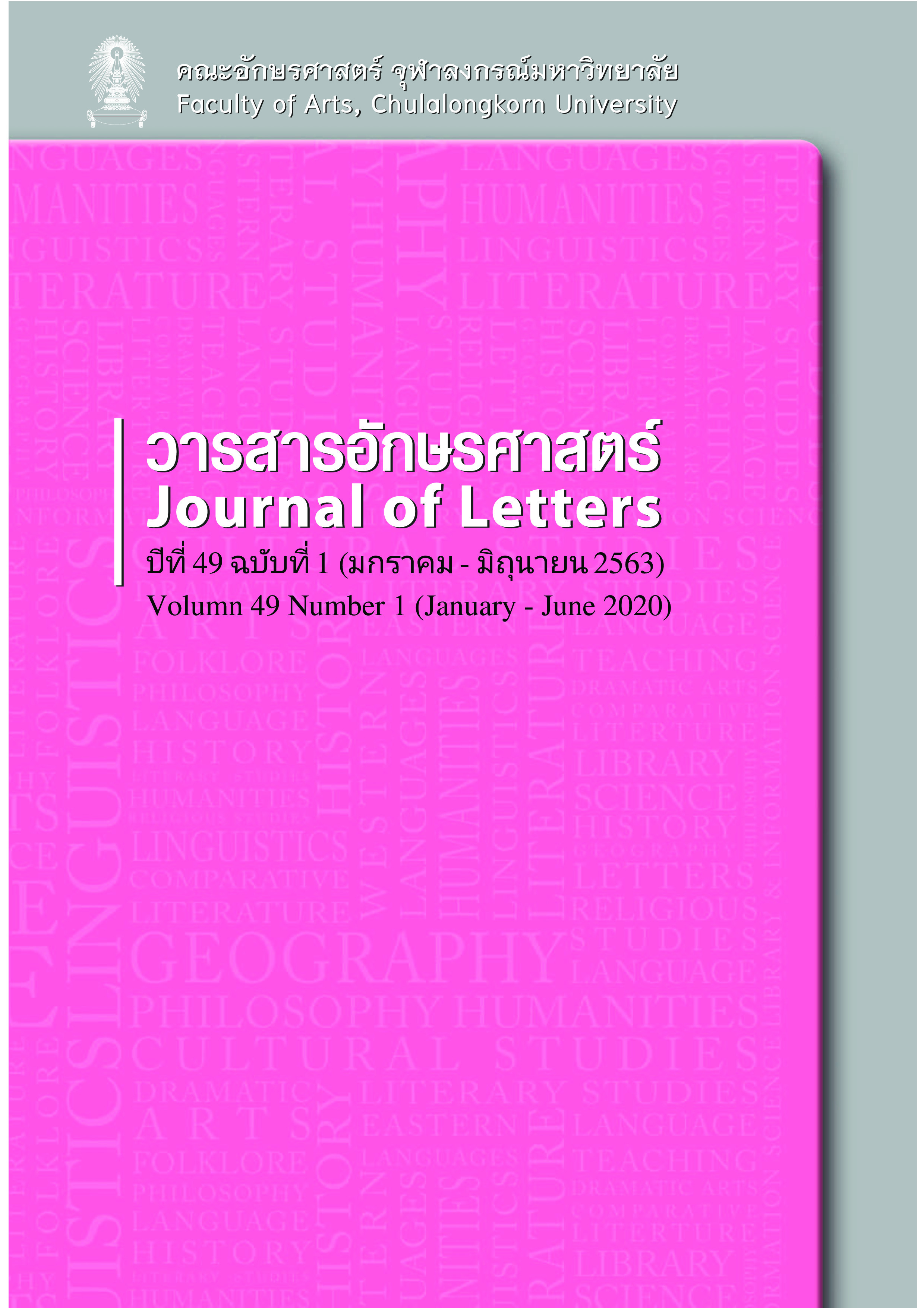‘So Hydous was the Noyse’:
Forgetting the 1381 Rebellion in Geoffrey Chaucer’s The Nun’s Priest’s Tale
Keywords:
Chaucer, The Nun’s Priest’s Tale, forgetting, the everyday, the Peasants’ Revolt of 1381Abstract
Since the medieval period, memory has been considered a site of identity formation and an important cultural force. Forgetting, on the other hand, has been dismissed because it seems impossible to study or recover what has already been forgotten. This study argues to the contrary. I focus on forgetting as a significant cultural practice, allowing the ruling classes and social institutions to perpetuate ideologies and manipulate how history is represented. In so arguing, I choose one of the most renowned events in medieval England as the subject of my study, which is the Peasants’ Revolt of 1381. This Rebellion has been commemorated by many medieval authors, including Geoffrey Chaucer in The Nun’s Priest’s Tale from The Canterbury Tales. In this particular tale, I contend that Chaucer uses ‘everyday’ language and description of life in a rural village to erase the memory of the turbulence and boisterousness of the Revolt. Through this narrative of everyday life, the upheaval of the Revolt is forgotten and it is reduced to a story of another barnyard commotion.
References
Anderson, Benedict. 1991. Imagined Communities: Reflections on the Origin and Spread of Nationalism (rev. ed.). London: Verso.
Astell, Ann. W. 1999. Political Allegory in Late Medieval England. Ithaca: Cornell University Press.
Blamires, Alcuin. 2000. Chaucer the Reactionary Ideology and the General Prologue to The Canterbury Tales. Review of English Studies 51(204): 523-539.
Blanchot, Maurice. 1987. Everyday Speech. (Susan Hanson, Trans.). Yale French Studies (73): 12-20.
Bourdieu, Pierre. 1977. Outline of a Theory of Practice (Richard Nice, Trans.). Cambridge: Cambridge University Press.
Bishop, Ian. 1979. The Nun’s Priest’s Tale and the Liberal Arts. The Review of English Studies XXX(119): 257-267.
Bisson, Lilian M. 1998. Chaucer and the Late Medieval World. New York: St. Martin’s Press.
Burke, Peter. 1997. Varieties of Cultural History. Ithaca: Cornell University Press.
Carruthers, Mary. 2008. The Book of Memory: A Study of Memory in Medieval Culture (2nd ed.). Cambridge: Cambridge University Press.
Chaucer, Geoffrey. 1997. The Riverside Chaucer. Boston, MA: Houghton Mifflin.
Crane, Susan. 1992. The Writing Lesson of 1381. In Chaucer’s England: Literature in Historical Context. ed. Barbara Hannawalt, 201-212. Minneapolis: University of Minnesota Press.
David, Alfred. 1976. The Strumpet Muse: Art and Morals in Chaucer’s Poetry. Bloomington: Indiana University Press.
Dobson, Richard B. (Ed.). 1970. The Peasants’ Revolt of 1381. London: Macmillan.
Dyer, Christopher. 1984. The Social and Economic Background to the Rural Revolt of 1381. In The English Rising of 1381, R.H. Hilton and T.H. Aston, eds. 9-42. Cambridge: Cambridge University Press.
Fehrenbacher, Richard W. 1994. A Yeerd Enclosed Al Aboute: Literature and History in The Nun’s Priest’s Tale. The Chaucer Review 29(2): 134-148.
Ganim, John. 1990. Chaucer and the Noise of the People. Exemplaria 2(1): 71-88.
Heidegger, Martin. 1972. On Time and Being (J. Stambaugh, Trans.). New York: Harper & Row.
Hilton, Rodney. 1975. The English Peasantry in the Later Middle Ages. Oxford: Oxford University Press.
Ivic, Christopher. 2004. Reassuring Fraticide in 1 Henry IV. In Forgetting in Early Modern Literature and Culture: Lethe’s Legacies, Christopher Ivic, and Grant Williams, eds. 99-109. London: Routledge.
Ivic, C., & Williams, G. (Eds.). 2004. Forgetting in Early Modern English Literature and Culture: Lethe’s Legacies. London: Routledge.
Justice, Steven. 1994. Writing and Rebellion: England in 1381. Berkeley: University of California Press.
Lefebvre, Henri. 1984. Everyday Life in the Modern World [1968] (Sacha Rabinovitch, Trans.). New Brunswick: Transaction Publishers.
Morgan, Gerald. 2003. Moral and Social Identity and the Idea of Pilgrimage in The General Prologue. The Chaucer Review 37(2003): 285-314.
Patterson, Lee. 1991. Chaucer and the Subject of History. Madison: University of Wisconsin Press.
Prescott, Andrew. 1981. London in the Peasants’ Revolt: A Portrait Gallery. The London Journal 7(2): 125-143.
Russell, Jay S. 1995. Is London burning? A Chaucerian Allusion to the Rising of 1381. Chaucer Review 30(1): 107-109.
Scanlon, Larry. 1989. The Authority of Fable: Allegory and Irony in The Nun’s Priest’s Tale. Exemplaria 1(1): 43-68.
Strohm, Paul. 1992. Hochon’s Arrow: The Social Imagination of Fourteenth-Century Texts. Princeton: Princeton University Press.
Hector, L. C., & Harvey, B. F. (Eds., & Trans.). 1982. The Westminster Chronicle. Oxford: Clarendon Press.
Travis, Peter W. 1998. Chaucer’s Trivial Fox Chase and the Peasants’ Revolt of 1381. The Journal of Medieval and Renaissance Studies 18(2): 195-220.
Trouillot, Michel-Rolph. 1995. Silencing the Past: Power and the Production of History. Boston: Beacon Press.
Downloads
Published
How to Cite
Issue
Section
License
Copyright and plagiarism
Authors are responsible for obtaining permission to use copyrighted materials from copyright owners. Authors are responsible for observing requisite copyright law when quoting or reproducing copyrighted materials. Quotations and reproductions of content from other published sources must be accompanied by a reference and all sources should be clearly listed in the references section. Quotations and reproductions of content from external sources without due attribution could be considered a severe infringement of academic conduct and may constitute a legal offence under the Copyright Act of B.E. 2537. Any legal ramifications arising from the infringement of copyright regulations would be the sole responsibility of the author(s).



